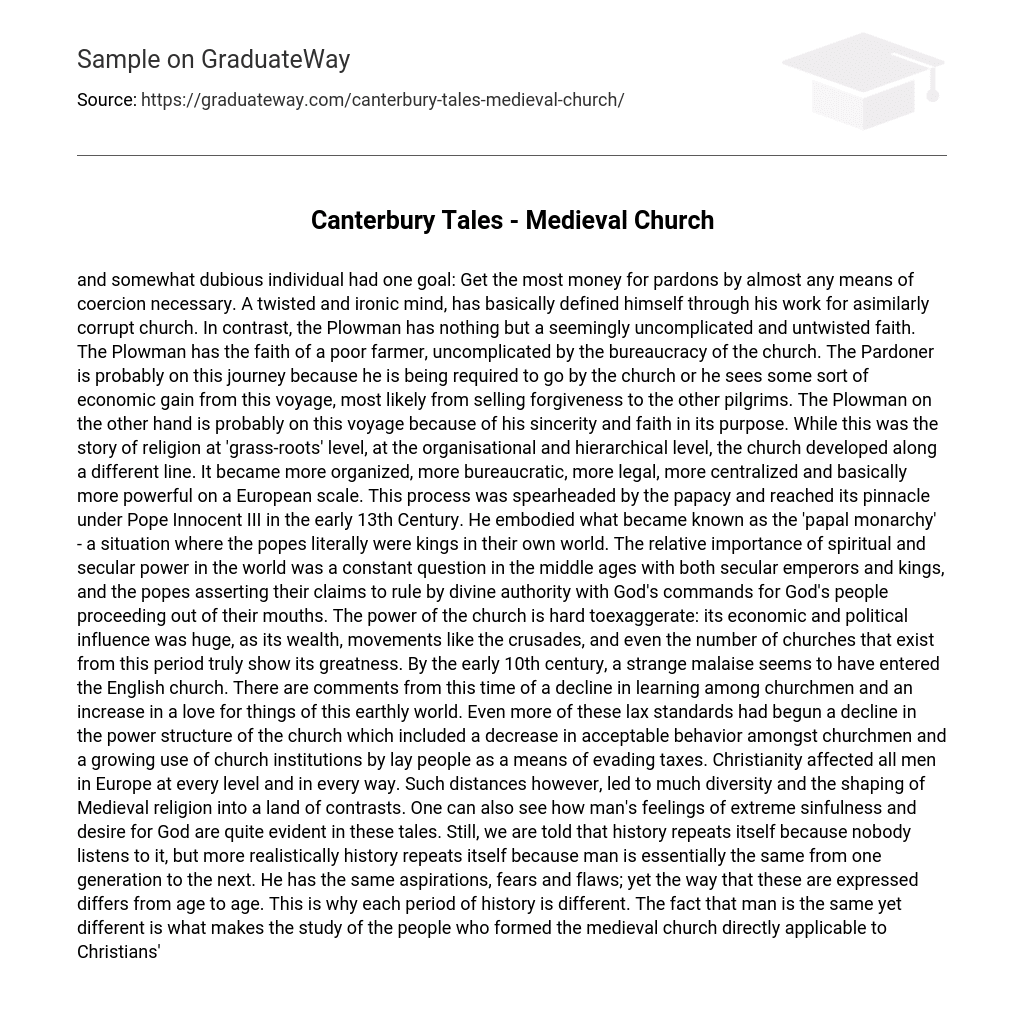and somewhat dubious individual had one goal: Get the most money for pardons by almost any means of coercion necessary. A twisted and ironic mind, has basically defined himself through his work for asimilarly corrupt church. In contrast, the Plowman has nothing but a seemingly uncomplicated and untwisted faith.
The Plowman has the faith of a poor farmer, uncomplicated by the bureaucracy of the church. The Pardoner is probably on this journey because he is being required to go by the church or he sees some sort of economic gain from this voyage, most likely from selling forgiveness to the other pilgrims. The Plowman on the other hand is probably on this voyage because of his sincerity and faith in its purpose. While this was the story of religion at ‘grass-roots’ level, at the organisational and hierarchical level, the church developed along a different line. It became more organized, more bureaucratic, more legal, more centralized and basically more powerful on a European scale.
This process was spearheaded by the papacy and reached its pinnacle under Pope Innocent III in the early 13th Century. He embodied what became known as the ‘papal monarchy’ – a situation where the popes literally were kings in their own world. The relative importance of spiritual and secular power in the world was a constant question in the middle ages with both secular emperors and kings, and the popes asserting their claims to rule by divine authority with God’s commands for God’s people proceeding out of their mouths. The power of the church is hard toexaggerate: its economic and political influence was huge, as its wealth, movements like the crusades, and even the number of churches that exist from this period truly show its greatness. By the early 10th century, a strange malaise seems to have entered the English church.
There are comments from this time of a decline in learning among churchmen and an increase in a love for things of this earthly world. Even more of these lax standards had begun a decline in the power structure of the church which included a decrease in acceptable behavior amongst churchmen and a growing use of church institutions by lay people as a means of evading taxes. Christianity affected all men in Europe at every level and in every way. Such distances however, led to much diversity and the shaping of Medieval religion into a land of contrasts. One can also see how man’s feelings of extreme sinfulness and desire for God are quite evident in these tales.
Still, we are told that history repeats itself because nobody listens to it, but more realistically history repeats itself because man is essentially the same from one generation to the next. He has the same aspirations, fears and flaws; yet the way that these are expressed differs from age to age. This is why each period of history is different. The fact that man is the same yet different is what makes the study of the people who formed the medieval church directly applicable to Christians’ lives and experiences today.





